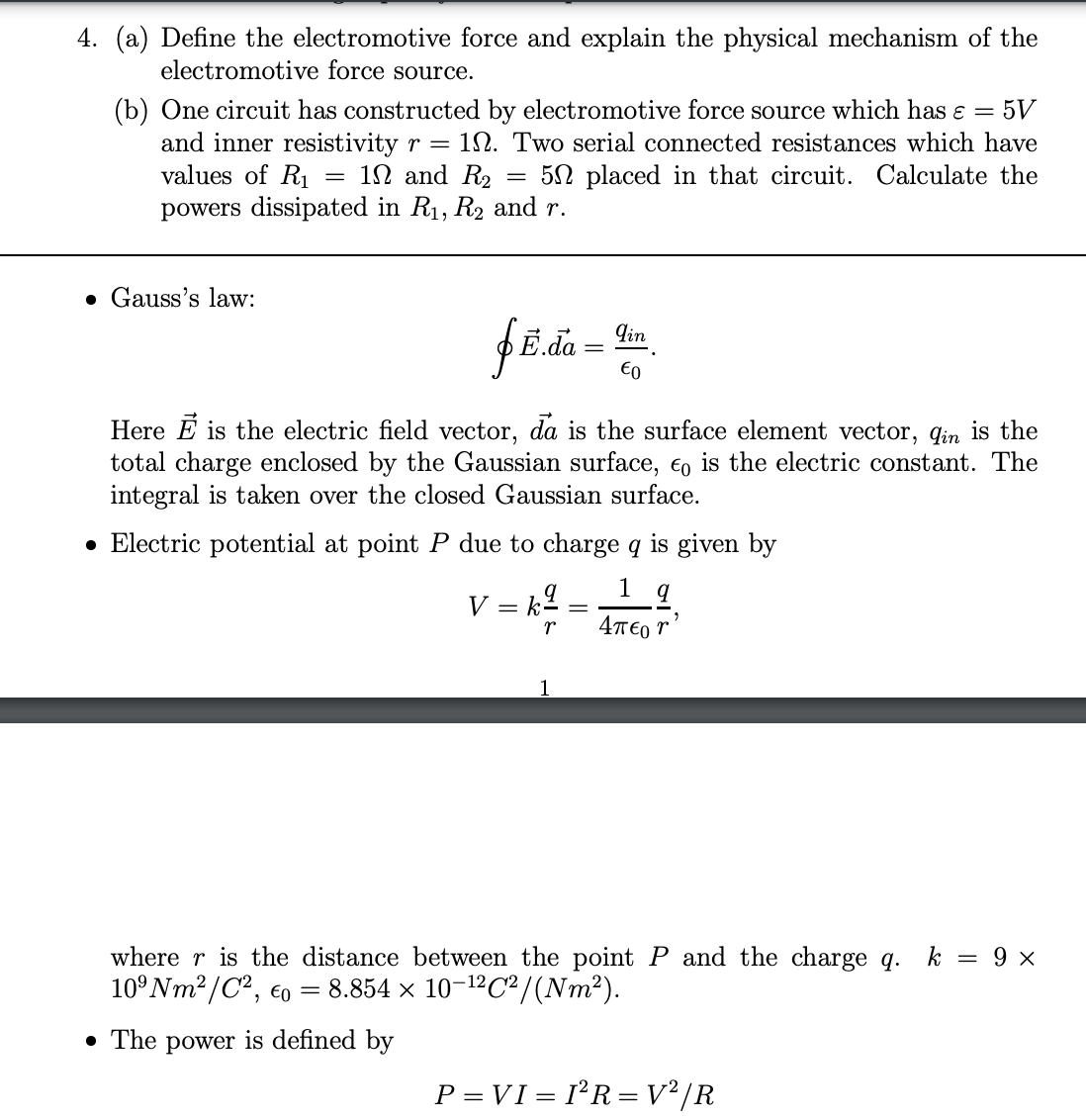4. (a) Define the electromotive force and explain the physical mechanism of the electromotive force source. (b) One circuit has constructed by electromotive force source which has ɛ = 5V and inner resistivity r = values of R1 powers dissipated in R1, R2 and r. 1N. Two serial connected resistances which have 5N placed in that circuit. Calculate the IN and R2
4. (a) Define the electromotive force and explain the physical mechanism of the electromotive force source. (b) One circuit has constructed by electromotive force source which has ɛ = 5V and inner resistivity r = values of R1 powers dissipated in R1, R2 and r. 1N. Two serial connected resistances which have 5N placed in that circuit. Calculate the IN and R2
College Physics
1st Edition
ISBN:9781938168000
Author:Paul Peter Urone, Roger Hinrichs
Publisher:Paul Peter Urone, Roger Hinrichs
Chapter21: Circuits And Dc Instruments
Section: Chapter Questions
Problem 39CQ: An electronic apparatus may have large capacitors at high voltage in the power supply section,...
Related questions
Question
it was an old question on exam, and I want know jow I can solve this question.

Transcribed Image Text:4. (a) Define the electromotive force and explain the physical mechanism of the
electromotive force source.
(b) One circuit has constructed by electromotive force source which has ɛ = 5V
and inner resistivity r = 12. Two serial connected resistances which have
values of R1
1N and R2
5N placed in that circuit. Calculate the
%3D
powers dissipated in R1, R2 and r.
• Gauss's law:
qin
€0
Here E is the electric field vector, da is the surface element vector, qin is the
total charge enclosed by the Gaussian surface, €o is the electric constant. The
integral is taken over the closed Gaussian surface.
• Electric potential at point P due to charge q is given by
V = k2.
1 q
4T€0 r
where r is the distance between the point P and the charge q. k = 9 x
10°NM2/C², eo
= 8.854 × 10-12C²/(Nm²).
• The power is defined by
P = VI = I²R= V² /R
Expert Solution
This question has been solved!
Explore an expertly crafted, step-by-step solution for a thorough understanding of key concepts.
Step by step
Solved in 5 steps

Knowledge Booster
Learn more about
Need a deep-dive on the concept behind this application? Look no further. Learn more about this topic, physics and related others by exploring similar questions and additional content below.Recommended textbooks for you

College Physics
Physics
ISBN:
9781938168000
Author:
Paul Peter Urone, Roger Hinrichs
Publisher:
OpenStax College


College Physics
Physics
ISBN:
9781285737027
Author:
Raymond A. Serway, Chris Vuille
Publisher:
Cengage Learning

College Physics
Physics
ISBN:
9781938168000
Author:
Paul Peter Urone, Roger Hinrichs
Publisher:
OpenStax College


College Physics
Physics
ISBN:
9781285737027
Author:
Raymond A. Serway, Chris Vuille
Publisher:
Cengage Learning


Glencoe Physics: Principles and Problems, Student…
Physics
ISBN:
9780078807213
Author:
Paul W. Zitzewitz
Publisher:
Glencoe/McGraw-Hill

An Introduction to Physical Science
Physics
ISBN:
9781305079137
Author:
James Shipman, Jerry D. Wilson, Charles A. Higgins, Omar Torres
Publisher:
Cengage Learning